A point charge +q is placed at a distance d from an isolated conducting plane. The field at a point P on the other side of plane is
directed perpendicular to the plane and away from the plane.
directed perpendicular to the plane but towards the plane.
directed radially away from the point charge
directed radially towards the point charge.
The correct Answer is:A
To solve the problem, we need to analyze the electric field created by a point charge +q placed near an isolated conducting plane. Here’s a step-by-step solution:
Step 1: Understand the Setup
We have a point charge +q located at a distance d from an isolated conducting plane. The conducting plane will respond to the electric field created by the point charge.
Hint: Visualize the scenario by drawing the point charge and the conducting plane.
Step 2: Induced Charges on the Conducting Plane
When the point charge +q is brought near the conducting plane, it induces a charge on the surface of the conductor. The side of the conducting plane closest to the charge will have a negative charge induced on it, while the side farthest from the charge will have a positive charge induced. This is due to the movement of free electrons in the conductor.
Hint: Remember that conductors can redistribute their charges in response to external electric fields.
Step 3: Analyze the Electric Field
The electric field at a point P on the other side of the conducting plane (away from the point charge) will be influenced by the induced charges. The electric field due to the induced negative charge on the conducting plane will point towards the plane, while the electric field due to the positive charge +q will point away from the charge.
Hint: Consider the superposition principle: the total electric field is the vector sum of the fields due to the point charge and the induced charges.
Step 4: Determine the Direction of the Electric Field at Point P
At point P, the electric field due to the positive charge +q will be directed away from the charge, while the electric field due to the induced negative charge on the conducting plane will be directed towards the plane. However, since point P is on the opposite side of the plane, the effect of the induced charges will dominate.
Hint: Think about how the fields from the positive charge and the induced charge interact at point P.
Step 5: Conclusion
The net electric field at point P will be directed perpendicular to the conducting plane and away from the plane. Thus, the correct answer is that the electric field at point P is directed perpendicular to the plane and away from the plane.
Final Answer: The electric field at point P is directed perpendicular to the plane and away from the plane.
We have a point charge +q located at a distance d from an isolated conducting plane. The conducting plane will respond to the electric field created by the point charge.
When the point charge +q is brought near the conducting plane, it induces a charge on the surface of the conductor. The side of the conducting plane closest to the charge will have a negative charge induced on it, while the side farthest from the charge will have a positive charge induced. This is due to the movement of free electrons in the conductor.
The electric field at a point P on the other side of the conducting plane (away from the point charge) will be influenced by the induced charges. The electric field due to the induced negative charge on the conducting plane will point towards the plane, while the electric field due to the positive charge +q will point away from the charge.
At point P, the electric field due to the positive charge +q will be directed away from the charge, while the electric field due to the induced negative charge on the conducting plane will be directed towards the plane. However, since point P is on the opposite side of the plane, the effect of the induced charges will dominate.
The net electric field at point P will be directed perpendicular to the conducting plane and away from the plane. Thus, the correct answer is that the electric field at point P is directed perpendicular to the plane and away from the plane.
Topper's Solved these Questions
- ELECTRIC CHARGES AND FIELDBOOK - NCERT EXEMPLAR ENGLISHCHAPTER - ELECTRIC CHARGES AND FIELDEXERCISE - MCQ s (More than One Options)
6 Videos
- ELECTRIC CHARGES AND FIELDBOOK - NCERT EXEMPLAR ENGLISHCHAPTER - ELECTRIC CHARGES AND FIELDEXERCISE - Very short Type Question
6 Videos
- DUAL NATURE OF RADIATION AND MATTERBOOK - NCERT EXEMPLAR ENGLISHCHAPTER - DUAL NATURE OF RADIATION AND MATTEREXERCISE - LONG ANSWER TYPE QUESTION
5 Videos
- ELECTROMAGNETIC INDUCTION BOOK - NCERT EXEMPLAR ENGLISHCHAPTER - ELECTROMAGNETIC INDUCTION EXERCISE - Long
11 Videos
Similar Questions
A point charge q is located at a distance l from an infinite conduting plane. Determine the surface density of charges induced on the plane as a function of separaction r from the base of the perpendicular drawn to the plane from the chagre.
View SolutionThe method of electrical images is used to solve the electrostatic problems, where charge distribution is not specified completely. The method consists of replacement of given charge distribution by a simplified charge distribution or a signal point charge or a number of point charges [rovided the original boundary conditions are still satisfied. For example consider a system consider a system containing a point charge q placed at a distance d of form an infinite conducting plane. The boundary conditions are :
(i) Potential is zero at infinity (ii) Potential is zero at each point on the conducting plane If we replaced the conducting plane by a point charge (-q) placed at a distance 'd' opposite to conducting plane. The charge (-q) is called the electrical image.
Now system consists of two charge +q an -q at seperation2d. If charge +q moves to a distance 'y' from the boundary of conducting plane (now absent), the electrical image -q also moves to the same 'y' from the boundary of conducting plane, so that the new distance between +q and -q is 2y
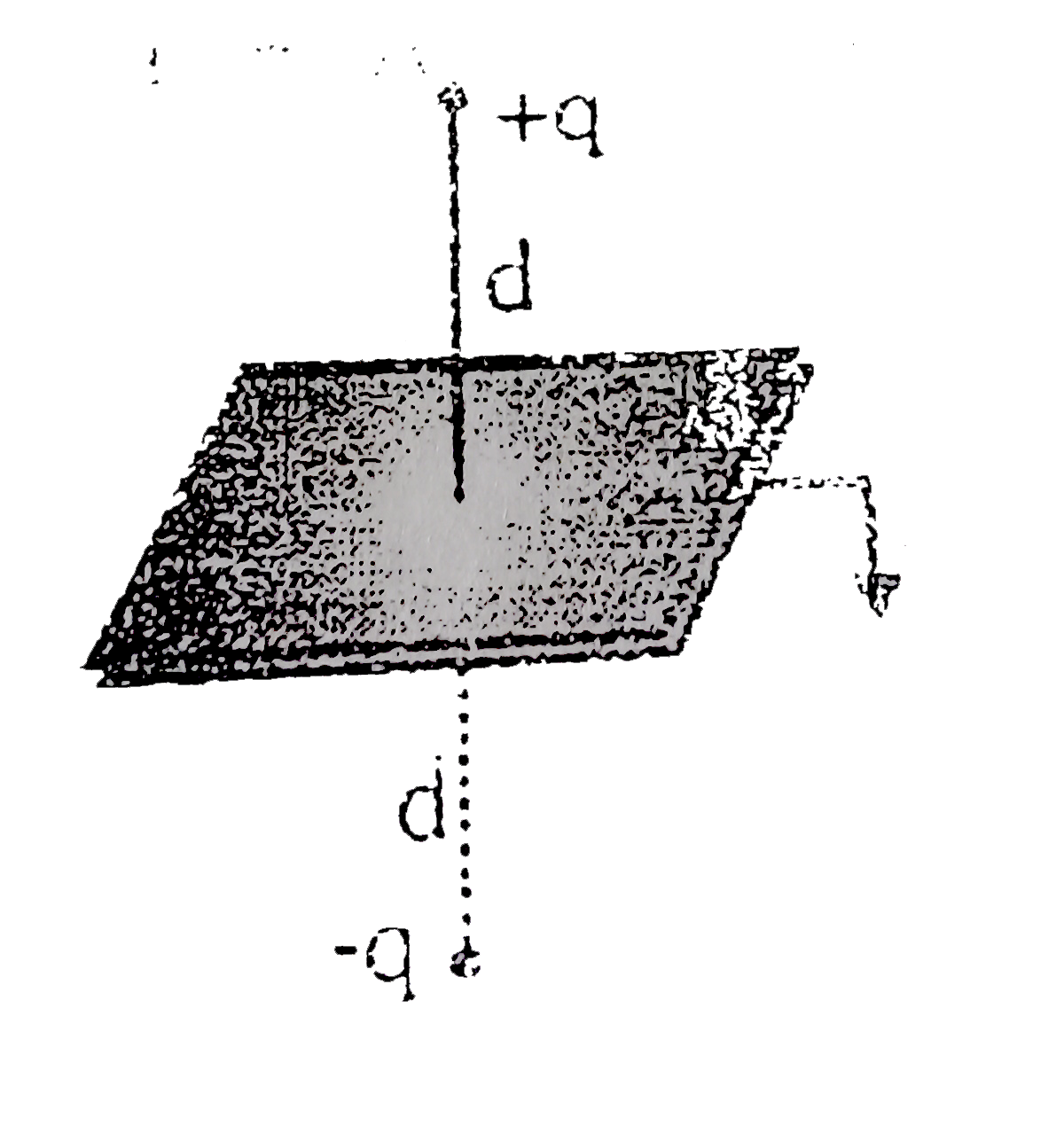
The work done in carrying charge q from distance d to distance y from earthed conducting plane is
View Solution
Knowledge Check
A point charge +q, is placed at a distance d from an isolated conducting plane. The field at a point P on the other side of the plane is
Adirected perpendicular to the plane and away from the plane.Bdirected perpendicular to the plane but towards the plane.Cdirected radially away from the point charge.Ddirected radially towards the point charge.
The method of electrical images is used to solve the electrostatic problems, where charge distribution is not specified completely. The method consists of replacement of given charge distribution by a simplified charge distribution or a signal point charge or a number of point charges [rovided the original boundary conditions are still satisfied. For example consider a system consider a system containing a point charge q placed at a distance d of form an infinite conducting plane. The boundary conditions are :
(i) Potential is zero at infinity (ii) Potential is zero at each point on the conducting plane If we replaced the conducting plane by a point charge (-q) placed at a distance 'd' opposite to conducting plane. The charge (-q) is called the electrical image.
Now system consists of two charge +q an -q at seperation2d. If charge +q moves to a distance 'y' from the boundary of conducting plane (now absent), the electrical image -q also moves to the same 'y' from the boundary of conducting plane, so that the new distance between +q and -q is 2y
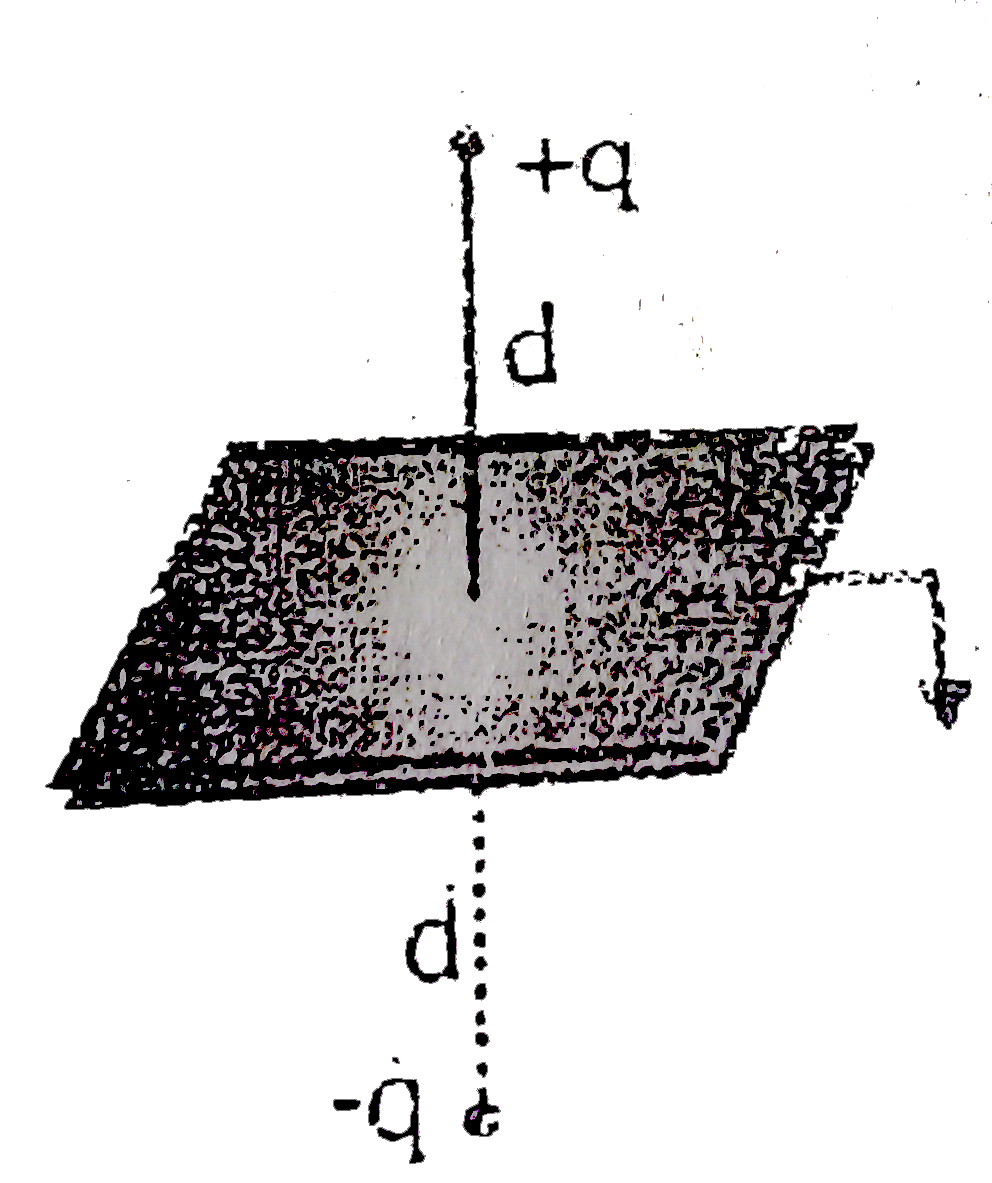
The force between point charge +q and earthed conducting plane is
View SolutionA point charge q is placed at a distance of r from cebtre of an uncharged conducting sphere of rad R(<r). The potential at any point on the sphere is
View SolutionA point charge q is placed at some distance d away from the centre of a grounded conducting sphere of radius r, as shown in the figure. The charge that flows the earth to the sphere is
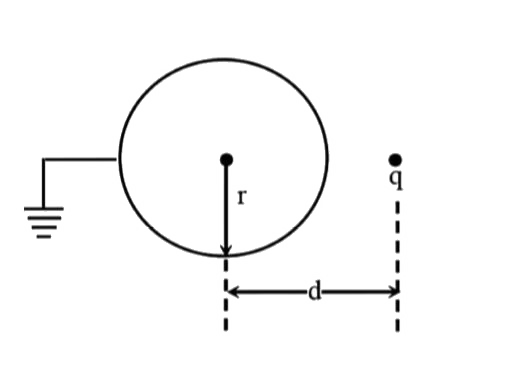
View SolutionA point charge +Q is placed at the centre of an isolated conducting shell of radius R. Find the electrostatic potential energy stored outside the spherical shell if the shell also contains charge +Q distributed uniformly over it.
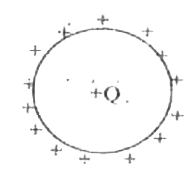
View SolutionTwo monochromatic and coherent point sources of light are placed at a certain distance from each other in the horizontal plane. The locus of all those points in the horizontal plane which have constructive interference will be-
View SolutionA point charge q is placed at a distance d from the centre of a circular disc of radius R. Find electric flux flowing through the disc due to that charge
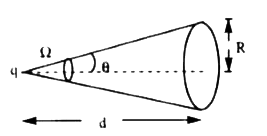
View Solution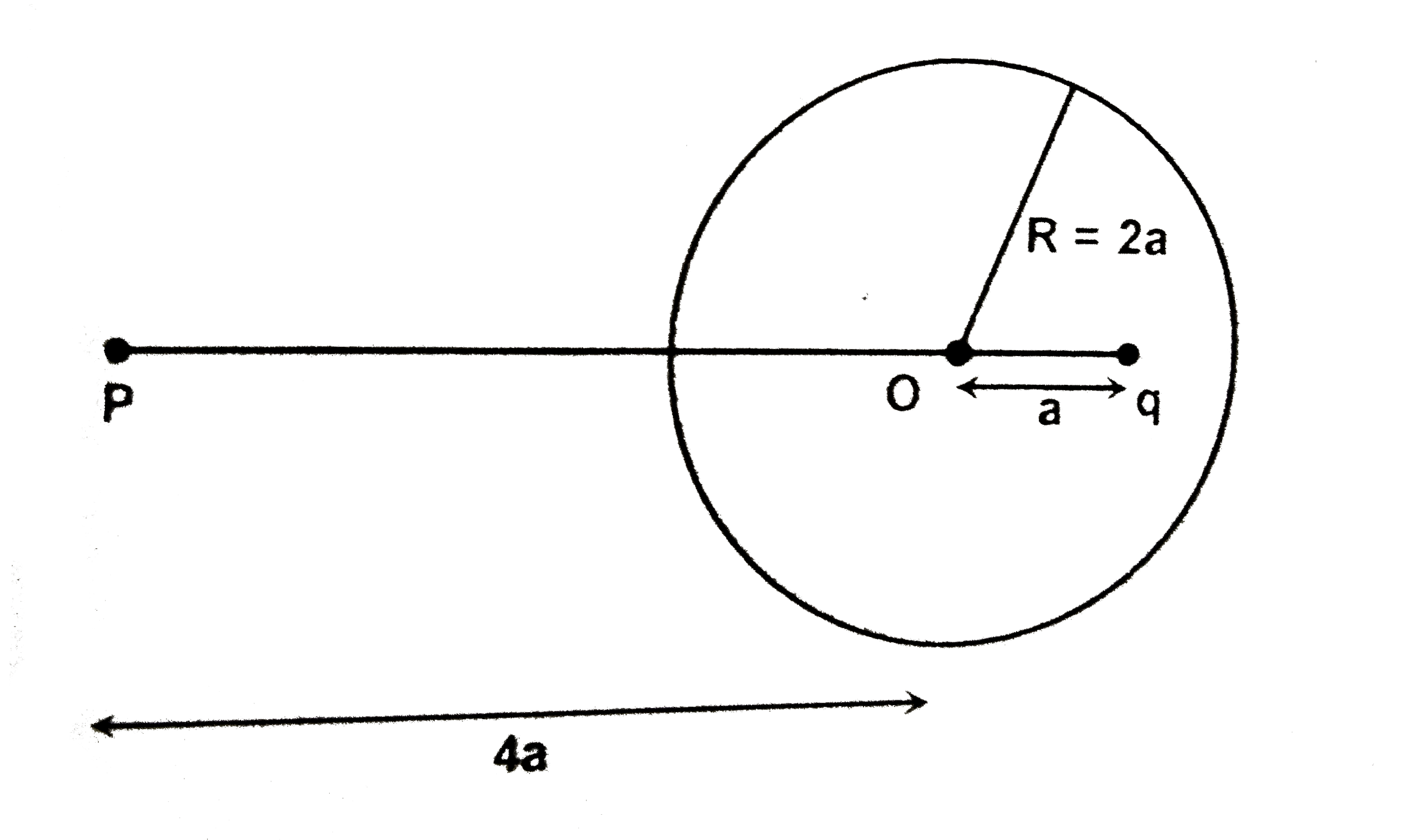
A point charge q'q is placed at distance 'a' from the centre of an uncharged thin spherical conducting shell of radius R=2a. A point 'P' is located at a distance 4a from the centre of the conducting shell as shown. The electric potential due to induced charge on the inner surface of the conducting shell at point 'P' is
View Solution
